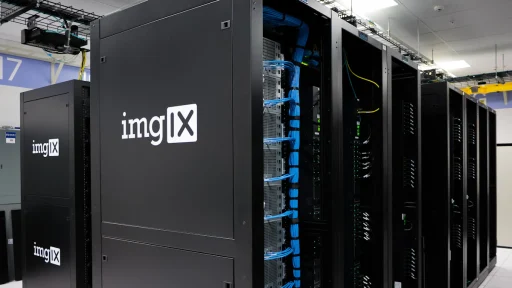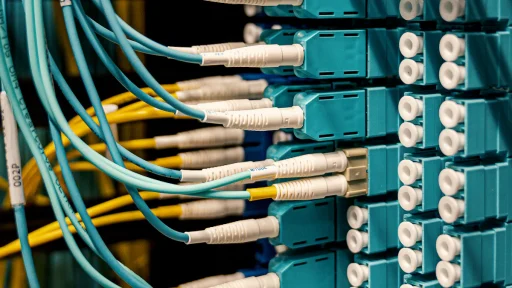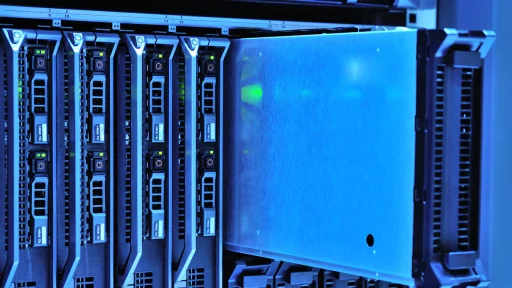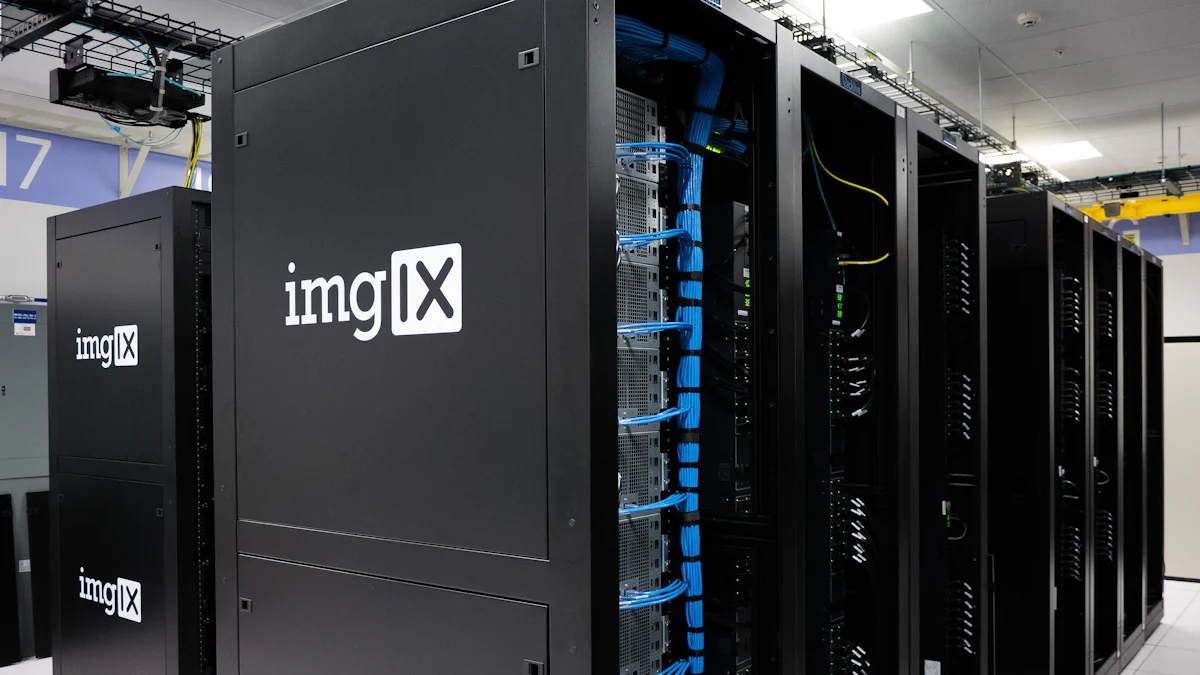

AI workloads are transforming data centers, pushing their power density to unprecedented levels. Traditional cooling methods struggle to manage the heat generated by these high-performance systems. Cooling systems now account for nearly a third of energy consumption in data centers, highlighting their critical role. Liquid cooling has emerged as a game-changer, offering superior heat dissipation and energy efficiency. By adopting advanced cooling strategies, you can ensure optimal performance, reduce operational costs, and maintain system reliability in your data center. Effective cooling is no longer optional—it’s essential for meeting the demands of modern workloads.
Key Takeaways
Liquid cooling is essential for managing the high heat output of AI workloads, significantly outperforming traditional air cooling methods.
Implementing energy-efficient cooling solutions can reduce operational costs and environmental impact, making liquid cooling a preferred choice for modern data centers.
Scalability is crucial; choose cooling systems that can adapt to increasing heat loads as your data center grows to avoid costly retrofits.
Prioritize infrastructure compatibility to ensure smooth integration of new cooling systems, minimizing installation challenges and expenses.
Invest in preventive maintenance and specialized expertise to enhance the reliability and performance of advanced cooling systems.
Utilize real-time temperature monitoring to proactively manage heat levels, preventing overheating and extending equipment lifespan.
Consider the total cost of ownership when selecting cooling systems, focusing on long-term savings through energy efficiency and reduced downtime.
Challenges of Cooling High-Density AI Deployments
Heat Density in AI Workloads
AI workloads generate a significantly higher heat output compared to traditional data centers. This is due to the immense power density of AI servers, which often exceeds 20 kW to 80 kW per rack. Such high heat density demands advanced cooling systems to maintain optimal performance. Conventional air cooling methods struggle to dissipate this level of heat effectively. Liquid cooling, on the other hand, has become a preferred solution. It directly addresses the thermal challenges posed by AI deployments, ensuring efficient heat removal and preventing overheating. Without proper thermal management, your data center risks reduced system reliability and potential hardware failures.
Energy Efficiency and Cost Management
Cooling accounts for a substantial portion of a data center’s energy consumption, often nearing one-third of the total usage. For AI deployments, this figure can rise even higher due to the increased cooling demands. Implementing energy-efficient solutions is essential to control operational costs and reduce environmental impact. Liquid cooling systems, such as direct-to-chip cooling, offer superior energy efficiency by targeting heat sources directly. Additionally, hybrid cooling systems combine air and liquid technologies to optimize energy use. By adopting these advanced cooling methods, you can achieve significant cost savings while maintaining high-performance standards.
Environmental Impact of Cooling Systems
The environmental footprint of cooling systems is a growing concern for data centers. Traditional cooling methods rely heavily on energy-intensive processes, contributing to higher carbon emissions. AI deployments exacerbate this issue due to their elevated cooling requirements. Transitioning to energy-efficient solutions like liquid cooling can mitigate environmental impact. These systems not only reduce energy consumption but also support sustainability goals. Furthermore, innovations in green cooling technologies, such as AI-driven optimization and renewable energy integration, are paving the way for more eco-friendly data center operations. By prioritizing environmentally conscious cooling strategies, you can align your data center with global sustainability efforts.
Types of Cooling Systems for AI-Powered Data Centers
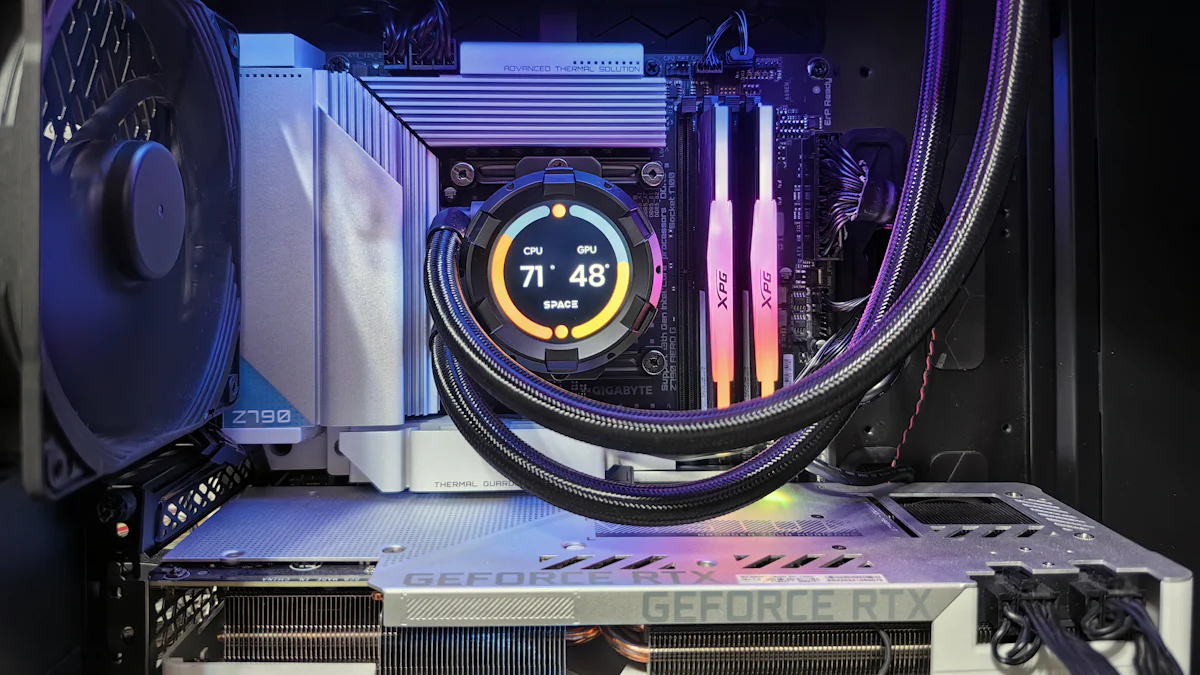

Choosing the right cooling systems for your AI-powered data center is essential to ensure efficiency and reliability. Advanced cooling technologies have been developed to address the unique challenges posed by high-density workloads. Below, you’ll find an overview of three key cooling solutions that can transform your data center operations.
Direct-to-Chip Liquid Cooling
Direct-to-chip cooling is one of the most efficient methods for managing heat in AI workloads. This system uses liquid-cooled cold plates that come into direct contact with CPUs and GPUs. The liquid absorbs heat from these components and transfers it away through a coolant loop. By targeting the heat source directly, this method ensures precise thermal management and reduces the need for airflow within the server.
You’ll find this solution particularly effective for AI training clusters, where processors generate immense heat. Direct-to-chip cooling not only enhances performance but also minimizes energy consumption. It’s a scalable option that integrates seamlessly into modern data center liquid cooling setups, making it ideal for high-performance computing environments.
Immersion Cooling Systems
Immersion cooling takes a different approach by submerging entire servers in a dielectric liquid. This liquid is non-conductive, allowing it to safely absorb heat from all components. Immersion cooling systems can handle extremely high heat loads, often exceeding 100 kW per tank, making them perfect for AI and HPC workloads.
This method eliminates the need for fans and airflow, which reduces noise and energy usage. Immersion cooling also offers excellent thermal stability, ensuring consistent performance even under heavy workloads. If you’re looking for a cutting-edge solution to tackle the heat generated by advanced processors, immersion cooling provides unmatched efficiency and reliability.
Rear-Door Heat Exchangers
Rear-door heat exchangers (RDHx) integrate liquid cooling into the rear door of a server rack. These systems use chilled water to extract heat as it exits the rack. RDHx is a hybrid solution that combines the benefits of liquid cooling with the simplicity of air-based systems. It’s an excellent choice for retrofitting existing data centers without requiring significant infrastructure changes.
This cooling method is highly effective in managing moderate to high heat loads. By removing heat directly at the rack level, RDHx reduces the strain on traditional air conditioning systems. If your data center needs a flexible and cost-effective cooling upgrade, rear-door heat exchangers offer a practical solution.
Hybrid Cooling Systems (Air and Liquid)
Hybrid cooling systems combine the strengths of air and liquid cooling to create a versatile solution for AI-powered data centers. These systems adapt to varying cooling demands by seamlessly switching between air and liquid technologies. This flexibility makes hybrid cooling an excellent choice for environments with fluctuating workloads or evolving infrastructure needs.
The principle behind hybrid cooling involves a direct heat exchange process. Cool water absorbs heat from hot air, significantly enhancing the system’s cooling capacity. This approach ensures efficient thermal management, even in high-density setups. By integrating air and liquid cooling, hybrid systems provide a balanced solution that optimizes energy use while maintaining reliable performance.
Hybrid cooling systems are particularly advantageous for retrofitting existing data centers. They require minimal modifications to infrastructure, making them a cost-effective option for facilities transitioning to advanced cooling technologies. While moderately more expensive than traditional air-based systems, hybrid cooling offers long-term savings through improved efficiency and reduced energy consumption.
However, it’s essential to consider the water usage associated with hybrid cooling. These systems consume significant amounts of water during operation, which may impact sustainability goals. To address this, you can explore water-efficient designs or pair hybrid systems with renewable energy sources to minimize environmental impact.
For AI workloads, hybrid cooling systems strike a balance between performance, cost, and adaptability. They enhance the overall efficiency of data center liquid cooling setups, ensuring your facility remains future-ready without compromising on reliability.
Benefits of Liquid Cooling Technology
Enhanced Performance for AI Workloads
Liquid cooling significantly enhances the performance of AI workloads by efficiently managing the heat generated by high-density computing environments. Unlike traditional air-based systems, liquid cooling absorbs and dissipates heat much faster, ensuring that processors operate at optimal temperatures. This capability is especially critical for AI deployments, where chips often run hotter due to their intensive computational demands.
According to studies, liquid cooling is 3,000 times more effective than air cooling in dissipating heat from server components. This efficiency ensures that your AI systems maintain peak performance without throttling or overheating.
By adopting liquid cooling solutions, you can unlock the full potential of your high-performance computing infrastructure. The improved thermal management allows processors to handle more complex workloads, enabling faster training and inference for AI models. This makes liquid cooling indispensable for modern data centers aiming to support advanced AI applications.
Improved Energy Efficiency
Energy efficiency is a cornerstone of liquid cooling technology. Traditional cooling systems consume vast amounts of energy to maintain the required temperatures in data centers. Liquid cooling, however, directly targets heat sources, reducing the need for energy-intensive air circulation and cooling mechanisms.
Research highlights that liquid cooling technologies not only lower energy consumption but also align with sustainability goals by minimizing carbon emissions. This makes them a preferred choice for environmentally conscious data centers.
By integrating data center liquid cooling into your operations, you can achieve substantial energy savings. For instance, direct-to-chip cooling eliminates the inefficiencies of air-based systems by transferring heat directly from CPUs and GPUs to a coolant loop. This targeted approach reduces overall power usage, cutting operational costs while maintaining high cooling efficiency.
Increased Reliability in High-Density Environments
Reliability is a critical factor in high-density environments, where even minor temperature fluctuations can lead to hardware failures. Liquid cooling provides consistent and effective thermal management, ensuring that your systems remain stable under heavy workloads. This reliability is particularly vital for AI workloads, which demand uninterrupted performance.
Studies emphasize that liquid cooling is essential for AI servers, as it prevents overheating and extends the lifespan of critical components. By maintaining stable operating conditions, liquid cooling reduces the risk of downtime and costly repairs.
In addition to enhancing system reliability, liquid cooling supports scalability. As your data center grows to accommodate more powerful hardware, liquid cooling systems can adapt to meet increasing thermal demands. This scalability ensures that your infrastructure remains future-ready, capable of handling the evolving needs of AI and high-performance computing.
How to Evaluate and Choose the Right Cooling System
Selecting the right cooling system for your data center requires careful evaluation. Each decision impacts performance, energy consumption, and long-term operational costs. By focusing on key factors like scalability, infrastructure compatibility, and cost-effectiveness, you can ensure your cooling strategy aligns with your data center’s needs.
Assessing Scalability and Future Needs
Scalability is a critical factor when evaluating cooling systems. As AI workloads grow, your data center must handle increasing heat loads without compromising performance. A scalable cooling solution ensures your infrastructure adapts to future demands, saving you from costly retrofits or replacements.
For instance, liquid cooling systems excel in scalability. They can accommodate higher power densities as your compute requirements expand. This makes them ideal for businesses investing in AI or edge deployments. By planning for growth, you avoid disruptions and maintain operational efficiency.
Pro Tip: Choose a cooling system designed to scale with your data center. This approach minimizes downtime and ensures seamless integration of new technologies.
Integration with Existing Infrastructure
Your cooling system must integrate smoothly with your current setup. Compatibility reduces installation challenges and avoids unnecessary expenses. Evaluate whether the cooling solution aligns with your data center’s layout, power distribution, and existing equipment.
Hybrid cooling systems offer flexibility in this regard. They combine air and liquid cooling, making them suitable for retrofitting older facilities. Rear-door heat exchangers are another practical option, as they require minimal modifications while enhancing cooling efficiency.
Key Insight: Prioritize solutions that complement your infrastructure. This ensures a faster deployment process and reduces the risk of operational disruptions.
Cost Considerations and ROI
Cost plays a significant role in choosing a cooling system. However, focusing solely on upfront expenses can lead to higher operational costs over time. Instead, evaluate the total cost of ownership (TCO), which includes installation, maintenance, and energy consumption.
Liquid cooling systems, while initially more expensive, often deliver better ROI due to their energy efficiency. By targeting heat sources directly, they reduce energy usage and lower utility bills. Additionally, these systems extend hardware lifespan, minimizing repair and replacement costs.
Did You Know? Cooling accounts for nearly one-third of a data center’s energy consumption. Investing in energy-efficient solutions can significantly cut operational expenses.
When assessing ROI, consider long-term benefits like improved reliability and reduced downtime. A well-chosen cooling system not only saves money but also enhances overall performance.
Expertise and Maintenance Requirements
Maintaining advanced cooling systems for AI-powered data centers demands specialized expertise. These systems, particularly liquid cooling solutions like immersion cooling, require precise handling to ensure optimal performance and reliability. Without the right knowledge and skills, you risk operational inefficiencies and costly downtime.
Industry Expert Insight: “Liquid cooling systems often require specialized maintenance protocols. Relying on outdated maintenance strategies can compromise system performance.”
To manage these systems effectively, you need a team trained in modern cooling technologies. For example, immersion cooling systems involve regular checks of the coolant’s integrity to prevent contamination. You must also monitor fluid levels, especially when adding or removing servers. Neglecting these tasks can lead to overheating or reduced system efficiency.
Preventive maintenance plays a crucial role in avoiding unexpected failures. Studies reveal that reactive approaches to maintenance can cost three to four times more than planned servicing. A comprehensive preventive plan should include regular analysis of all fluids, not just oil, to detect mechanical or chemical issues early.
Key Fact: “75% of the total cost of ownership (TCO) is attributed to ongoing maintenance, while only 25% goes to system implementation.”
The complexity of these systems also highlights the importance of investing in skilled personnel. Training your staff or hiring experts ensures that maintenance tasks are performed correctly. This reduces the likelihood of errors that could compromise the cooling system’s efficiency or lifespan.
Additionally, advanced cooling systems consume significant energy. Optimizing their operation can lower energy costs and support sustainability goals. For instance, regular maintenance of liquid cooling systems helps maintain their energy efficiency, reducing the environmental impact of your data center.
By prioritizing expertise and a robust maintenance strategy, you can enhance the reliability and performance of your cooling systems. This approach not only minimizes risks but also maximizes the return on your investment in advanced cooling technologies.
Common Pitfalls to Avoid in Cooling System Implementation
Ignoring Infrastructure Compatibility
Failing to consider infrastructure compatibility can lead to significant challenges during cooling system implementation. Liquid cooling systems, for instance, require seamless integration with your existing or planned data center setup. Without proper assessment, you may face costly redesigns or delays.
To avoid this, evaluate your data center’s layout, power distribution, and existing equipment before selecting a cooling solution. For example, rear-door heat exchangers work well in retrofitted environments, while immersion cooling may demand more extensive modifications. By aligning the cooling system with your infrastructure, you ensure smooth deployment and long-term efficiency.
Key Insight: “Assessing compatibility early prevents unnecessary expenses and ensures a hassle-free installation process.”
Underestimating Maintenance Needs
Advanced cooling systems demand specialized maintenance practices. Relying on outdated strategies can compromise performance and increase downtime. For example, liquid cooling systems like immersion cooling require regular checks of coolant quality and fluid levels. Neglecting these tasks can lead to overheating or reduced efficiency.
Preventive maintenance is essential. Regular inspections help identify potential issues before they escalate. Studies show that planned maintenance costs significantly less than reactive repairs. Training your team or hiring experts ensures proper handling of these systems, reducing the risk of errors.
Pro Tip: “Invest in preventive maintenance to enhance system reliability and minimize operational disruptions.”
Overlooking Real-Time Temperature Monitoring
Real-time temperature monitoring is critical for maintaining optimal performance in high-density environments. Without it, you risk missing early signs of overheating, which can lead to hardware failures. Advanced cooling systems often include sensors and monitoring tools to track temperature fluctuations.
Implementing these tools allows you to detect and address issues promptly. For example, AI-driven monitoring systems can optimize cooling performance by adjusting settings based on real-time data. This proactive approach not only prevents downtime but also extends the lifespan of your equipment.
Did You Know? “Real-time monitoring enhances cooling efficiency and ensures consistent performance under heavy workloads.”
By addressing these common pitfalls, you can maximize the effectiveness of your cooling system. Proper planning, maintenance, and monitoring create a reliable and efficient environment for your AI-powered data center.
Future Trends in Data Center Liquid Cooling
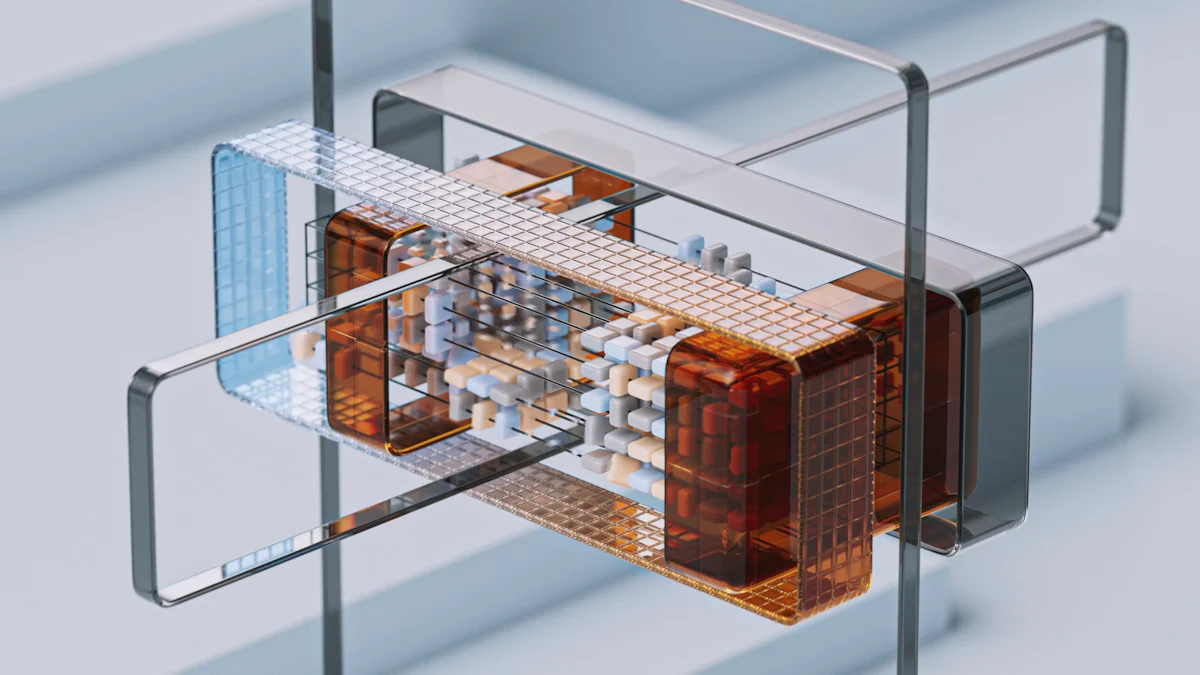

Innovations in Liquid Cooling Technology
The rapid evolution of liquid cooling technology is reshaping how data centers manage heat. Traditional air-based systems struggle to meet the demands of high-density environments, especially with the rise of AI workloads. Liquid cooling, however, absorbs heat faster and operates at higher capacities, making it a superior choice for modern data centers.
One of the most notable advancements is the development of direct-to-chip cooling systems. These systems target heat sources directly, ensuring efficient thermal management. Immersion cooling has also gained traction, offering the ability to submerge entire servers in dielectric fluids. This method eliminates the need for fans, reducing noise and energy consumption while maintaining consistent performance.
Key Insight: Liquid cooling technologies now achieve power usage effectiveness (PUE) levels below 1.2, significantly outperforming traditional air-cooled systems.
As processing-intensive applications like AI and machine learning grow, liquid cooling solutions are becoming indispensable. These innovations not only enhance cooling efficiency but also reduce operational costs, making them a critical component of future-ready data centers.
Sustainability and Green Cooling Solutions
Sustainability is a growing priority for data center operators. Cooling systems play a significant role in energy consumption, often accounting for a large portion of operational costs. Liquid cooling offers a more sustainable alternative by reducing energy usage and supporting green initiatives.
Modern liquid cooling solutions integrate renewable energy sources, such as solar or wind power, to further minimize their environmental impact. Additionally, advancements in water-efficient designs address concerns about resource consumption. For example, closed-loop systems recycle coolant, reducing water waste and promoting eco-friendly operations.
Pro Tip: Transitioning to liquid cooling aligns your data center with global sustainability goals while lowering carbon emissions.
By adopting green cooling technologies, you can create an environmentally conscious data center that balances performance with sustainability. These solutions not only reduce your ecological footprint but also enhance your facility’s reputation as a leader in sustainable practices.
AI-Driven Cooling System Optimization
Artificial intelligence is revolutionizing how cooling systems operate. AI-driven optimization tools analyze real-time data to adjust cooling parameters dynamically. This ensures that your data center maintains optimal temperatures without wasting energy.
For instance, AI algorithms can monitor GPU and CPU temperatures, predicting potential overheating issues before they occur. These systems also optimize fan speeds and coolant flow rates, reducing energy consumption while maintaining peak performance. By leveraging AI, you can achieve precise thermal management tailored to your data center’s unique needs.
Did You Know? AI-driven cooling systems can reduce energy usage by up to 40%, significantly lowering operational costs.
The integration of AI into liquid cooling systems enhances reliability and scalability. As your data center grows, these intelligent tools adapt to new workloads, ensuring consistent performance. This makes AI-driven optimization a valuable asset for future-proofing your cooling strategy.
Choosing the right cooling systems is vital for the success of your AI-powered data center. Advanced cooling solutions, such as liquid cooling, enhance performance, improve energy efficiency, and ensure system reliability. These technologies address the growing demands of modern AI workloads while reducing operational costs and minimizing equipment failures. Avoid common pitfalls by prioritizing infrastructure compatibility, scalability, and ease of maintenance. Seeking expert guidance can help you implement a future-proof strategy that adapts to evolving needs. By investing in efficient cooling, you secure long-term success for your data center operations.
FAQ
What role does liquid cooling play in managing high-density computing demands?
Liquid cooling plays a critical role in handling the heat generated by high-density computing environments. As processors in AI servers become more powerful, they produce significantly more heat. Air cooling systems often fail to keep up with these demands. Liquid cooling, however, efficiently absorbs and dissipates heat, ensuring that your servers operate at optimal temperatures. This makes it an essential solution for modern data centers.
Key Insight: Liquid cooling is not just an upgrade; it’s a necessity for AI workloads that push the limits of traditional cooling methods.
Why is liquid cooling considered the best option for AI servers?
AI servers generate immense heat due to their high computational power. Air cooling systems struggle to manage this heat effectively, especially as chips get hotter. Liquid cooling directly targets heat sources, providing precise thermal management. This ensures that your AI servers maintain peak performance without the risk of overheating or throttling.
Did You Know? Liquid cooling is up to 3,000 times more effective than air cooling in dissipating heat from server components.
How does immersion cooling differ from other liquid cooling methods?
Immersion cooling submerges entire servers in a non-conductive dielectric liquid. This liquid absorbs heat from all components, eliminating the need for fans or airflow. Unlike direct-to-chip cooling, which targets specific components, immersion cooling provides uniform heat dissipation. It’s particularly effective for handling extremely high heat loads, often exceeding 100 kW per tank.
Pro Tip: Immersion cooling offers excellent thermal stability, making it ideal for AI and HPC workloads that demand consistent performance.
Are hybrid cooling systems suitable for retrofitting older data centers?
Yes, hybrid cooling systems are an excellent choice for retrofitting older facilities. These systems combine air and liquid cooling technologies, offering flexibility and efficiency. They adapt to varying cooling demands and require minimal modifications to existing infrastructure. This makes them a cost-effective option for upgrading your data center.
Key Insight: Hybrid cooling systems strike a balance between performance and adaptability, making them a practical solution for evolving data center needs.
What are the environmental benefits of liquid cooling?
Liquid cooling reduces energy consumption by targeting heat sources directly, minimizing the need for energy-intensive air circulation. Many modern liquid cooling systems also incorporate water-efficient designs and renewable energy sources. These features help lower carbon emissions and support sustainability goals.
Did You Know? Transitioning to liquid cooling can significantly reduce your data center’s environmental footprint while enhancing its energy efficiency.
How can real-time temperature monitoring improve cooling system performance?
Real-time temperature monitoring allows you to track and manage heat levels in your data center. Advanced sensors and AI-driven tools detect temperature fluctuations and adjust cooling parameters dynamically. This proactive approach prevents overheating, reduces downtime, and extends the lifespan of your equipment.
Pro Tip: Implementing real-time monitoring enhances cooling efficiency and ensures consistent performance under heavy workloads.
What factors should you consider when choosing a cooling system?
When selecting a cooling system, focus on scalability, infrastructure compatibility, and cost-effectiveness. Ensure the system can handle future heat loads as your data center grows. Evaluate how well it integrates with your existing setup to avoid costly modifications. Consider the total cost of ownership, including installation, maintenance, and energy consumption.
Key Insight: A well-chosen cooling system not only saves money but also ensures long-term reliability and performance.
What maintenance requirements do liquid cooling systems have?
Liquid cooling systems demand specialized maintenance to ensure optimal performance. Regular checks of coolant quality and fluid levels are essential. Preventive maintenance helps identify potential issues early, reducing the risk of downtime. Training your team or hiring experts ensures proper handling of these advanced systems.
Did You Know? Planned maintenance costs significantly less than reactive repairs, making it a cost-effective strategy for managing cooling systems.
Can liquid cooling systems scale with growing data center demands?
Yes, liquid cooling systems are highly scalable. They can accommodate increasing power densities as your compute requirements expand. This makes them ideal for businesses investing in AI or edge deployments. Planning for scalability ensures your data center remains future-ready without the need for frequent upgrades.
Pro Tip: Choose a cooling system designed to grow with your data center to avoid disruptions and maintain operational efficiency.
How does AI-driven optimization enhance cooling system performance?
AI-driven tools analyze real-time data to adjust cooling parameters dynamically. These systems optimize fan speeds, coolant flow rates, and other variables to maintain optimal temperatures. By leveraging AI, you can achieve precise thermal management tailored to your data center’s unique needs.
Key Insight: AI-driven cooling systems can reduce energy usage by up to 40%, significantly lowering operational costs while ensuring reliability.

